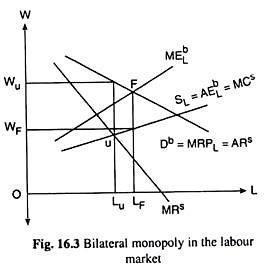


The pricing strategies used by the two parties involved in a bilateral monopoly are determined by their relative bargaining power and the demand and supply curves of the good or service. This market structure can lead to higher prices for flights and reduced competition and consumer welfare. Overall, the airline-airport relationship is an example of a bilateral monopoly, where two parties have significant power to influence the prices of flights and the fees that the airline pays to use the airport. This can lead to higher prices for flights and can reduce competition and consumer welfare. In addition, the two parties can also form exclusive agreements or collude to restrict the entry of other airlines into the market. The bargaining power of the two parties can have an effect on the pricing of flights and the fees that the airline pays to use the airport. The airline has the power to set the prices of flights, while the airport has the power to set the fees that the airline pays to use the airport. In this situation, the airline and the airport are the two parties involved in the monopoly. This market structure can lead to higher prices and decreased output, as well as reduced competition and consumer welfare.Ī common example of a bilateral monopoly is the relationship between an airline and an airport. Overall, bilateral monopoly is a market structure where two parties have the power to influence the prices and output of a good or service. If one party has more bargaining power than the other, they can influence the price of the good or service to their advantage, resulting in higher prices for the good or service. The pricing strategies of a bilateral monopoly can also be affected by the bargaining power of the two parties involved. This can further reduce consumer welfare, as there is less competition to drive down prices and increase supply.


The two parties involved in a bilateral monopoly can also reduce the amount of competition in the market by forming exclusive agreements or colluding to restrict the entry of other firms into the market. This can lead to a decrease in consumer welfare, as the prices for the good or service are higher than in more competitive market structures. This market structure is a form of monopoly, as the two parties involved can influence the market conditions and prices to their advantage, often resulting in higher prices and reduced output. The two parties involved in this type of market structure have significant power to determine the prices and output of the good or service. Bilateral monopoly is a market structure when there is one buyer and one seller of a good or service.


 0 kommentar(er)
0 kommentar(er)
